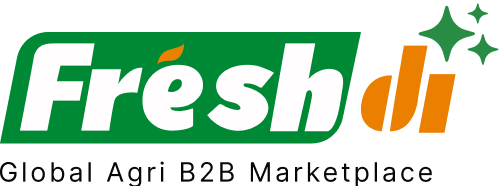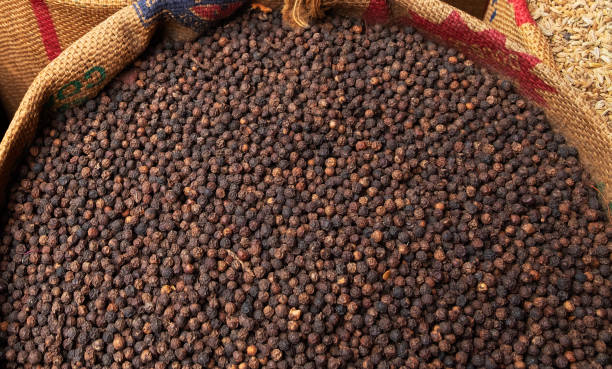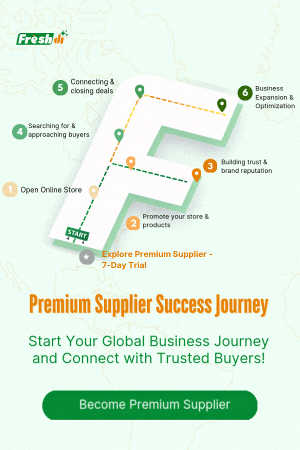Introduction – South Africa’s Pepper Market: A Quantitative Overview
South Africa might not be the first country that springs to mind when you think about pepper, but make no mistake—this southern African powerhouse plays an increasingly strategic role in the global pepper trade. With exports reaching over 1,084,000 tonnes in peak years and key destinations like the U.S., Botswana, and the Netherlands, South Africa is making its presence felt.
In a world where businesses rely on precision and performance, a data-driven approach is more important than ever. Whether you’re a spice trader, wholesaler, or food manufacturer, choosing the right supplier can make or break your procurement strategy. That’s why understanding the numbers behind South Africa’s pepper exports isn’t just smart—it’s essential.
Platforms like Freshdi help bridge this gap, offering real-time market intelligence, supplier verification, and RFQ trend analysis to guide smarter sourcing decisions.
Key Production, Export Statistics & Current Demand Data
Let’s break down South Africa’s pepper industry by the numbers:
Annual Production & Forecasted Growth
- Current projections estimate 1,200 metric tons of pepper production by 2026, growing at a modest 1.5% annually.
- This is a recovery from a market collapse in 2024, where total market value dropped sharply to $462K, a staggering 79.1% decline from 2022 levels.
Export Value & Volume
- In 2019, South Africa exported 36,000 tonnes, valued at $36.09 million.
- Export prices rose in 2023, averaging 13% higher than 2020 levels.
- Key destinations include:
- United States – top export destination by value
- Botswana – leading African buyer
- Netherlands – significant European market
- Japan – offers premium pricing
Demand Drivers & Market Signals
- Consumption remains steady at 22,000 metric tons/year, with no major shifts expected through 2026.
- RFQ data on Freshdi highlights increasing inquiries for cayenne and black pepper, matching global culinary trends.
- The cayenne segment is booming, projected to grow from $41.11M in 2024 to $55.4M by 2032 (3.8% CAGR).
This nuanced balance between production capacity, export momentum, and stable domestic consumption creates a dynamic, opportunity-rich market—especially for buyers tapping into Verified Suppliers via platforms like Freshdi.
Top 3 Verified Pepper Suppliers in South Africa – Proven Export Performers
Based on performance metrics, export reach, certifications, and buyer ratings available through Freshdi, here are the Top 3 Pepper Suppliers in South Africa as of May 2025:
1. Shady And Sonz Automobile Pty Ltd
This supplier stands out for its consistent export volume and high buyer satisfaction ratings. Known for high-quality black pepper and transparent logistics, they cater to both bulk and premium buyers globally.
2. Soother Dept Pty Ltd
A buyer favorite on Freshdi, Soother Dept specializes in black pepper exports with an emphasis on food-grade certifications and traceability. Their presence in EU markets is particularly strong.
3. SAMOCHE INTERNATIONAL SOLUTIONS
Blending variety with volume, SAMOCHE exports both capsicum and habanero types. Their competitive pricing and flexible MOQs make them ideal for mid-sized importers.
Dynamic Ranking Note: Freshdi regularly updates its supplier leaderboard with “Suppliers of the Month/Quarter.” Rankings reflect real-time buyer interactions, approval ratings, and RFQ conversion data.
Market Navigation – Statistical Trends, Value Dynamics & Export Insights
Let’s decode the deeper layers of South Africa’s pepper trade.
Export Trends
- From 2015 to 2019, export value grew by 20% annually, and quantity by 34%.
- Export volume in 2025 is stabilizing after the 2024 downturn, aligning with improved post-pandemic logistics.
Demand & Consumption
- South African consumption remains flat at 22,000 metric tons, offering exporters a surplus edge.
- Global demand is rising—especially for black pepper, expected to hit $4.33 billion by 2035 (5.2% CAGR).
- Cayenne’s growth at 3.8% CAGR is driven by spicy food trends and health-focused diets.
Seasonal Price Dynamics
- In 2025, pepper prices range from $2.03 to $7.43/kg, depending on type and season.
- Prices spike during:
- Late harvest months (August–October) – premium-quality yields
- Pre-holiday season (Nov–Dec) – driven by culinary demand
- Climate events and global supply chain shifts (notably in Vietnam and India) influence price volatility.
Forecasts
- By 2026, production will hit 1,200 metric tons, with value-added exports (ground/crushed pepper) taking a bigger slice of the pie.
- Africa’s pepper market, including South Africa, is growing fastest globally at 4.8% CAGR.
Recent Developments
- In 2024, the market dropped sharply due to erratic weather and reduced harvests.
- South Africa is also a net importer—e.g., Malawi exported $258.78K worth of pepper to South Africa in 2023.
- Tech adoption, such as blockchain traceability, is gaining traction as buyers demand transparency.
Conclusion – Leveraging Data for Strategic Sourcing
South Africa’s pepper sector is one of contrasts—stable local demand, volatile export prices, and a booming cayenne segment. But here’s the kicker: With the right tools and insights, you can navigate these waters with precision.
By leveraging platforms like Freshdi, you get access to:
– Verified supplier profiles with export histories
– Real-time RFQ trends and demand signals
– Aggregated trade data for smarter sourcing
Whether you’re a seasoned trader or a new entrant in the spice game, South Africa’s pepper market offers a world of opportunity—if you know where to look and who to trust.
🛒 Pepper Sourcing Checklist for Buyers
- ✅ Review supplier certifications and export history on Freshdi
- ✅ Monitor RFQ trends for cayenne, black, and habanero pepper
- ✅ Time purchases around seasonal price dips (Jan–Mar, post-harvest)
- ✅ Diversify suppliers to mitigate climate-related risks
- ✅ Choose suppliers with strong buyer reviews and dynamic rankings
🔮 Future Outlook
- Cayenne pepper will dominate exports, with strong CAGR and health-driven demand.
- Value-added processing (grinding, drying) will boost South Africa’s export value.
- Digital traceability and supplier transparency will become baseline expectations.
- Climate adaptation will be crucial—expect more greenhouse farming and drip irrigation.
With platforms like Freshdi empowering buyers with real-time insights and trusted sourcing pathways, the future of pepper trading from South Africa looks not just spicy—but smart.
Frequently Asked Questions (FAQs)
1. What are the main types of pepper exported from South Africa?
South Africa primarily exports black pepper, cayenne, habanero, and dried chili varieties. Cayenne is the fastest-growing segment.
2. When is the best time to source pepper from South Africa?
Late summer through early fall (August–October) offers the highest quality yields, while post-harvest months (January–March) often bring better pricing.
3. How can I verify a supplier’s export performance?
Platforms like Freshdi offer detailed supplier profiles showing certifications, buyer reviews, and export volumes.
4. Is South Africa a reliable long-term supplier of pepper?
Yes. Despite recent market volatility, production forecasts remain stable, and investments in agricultural tech are improving yield and quality.
5. What makes Freshdi different from other sourcing platforms?
Freshdi combines real-time RFQ trends, supplier verification, and dynamic ranking systems to help buyers make informed procurement decisions.
References
- IndexBox – South Africa Chili and Pepper Market Report
- Selina Wamucii – Pepper Prices in South Africa
- ResearchAndMarkets – South Africa Cayenne Pepper Market
- ReportLinker – Pepper Production Forecast
- Expert Market Research – South Africa Cayenne Pepper Market
- 6WResearch – South Africa Pepper Market
- FMI – Global Black Pepper Market
- Tridge – Black Pepper Export/Import Data
- TradingEconomics – Malawi Pepper Exports
- Cognitive Market Research – Pepper Seeds Market


